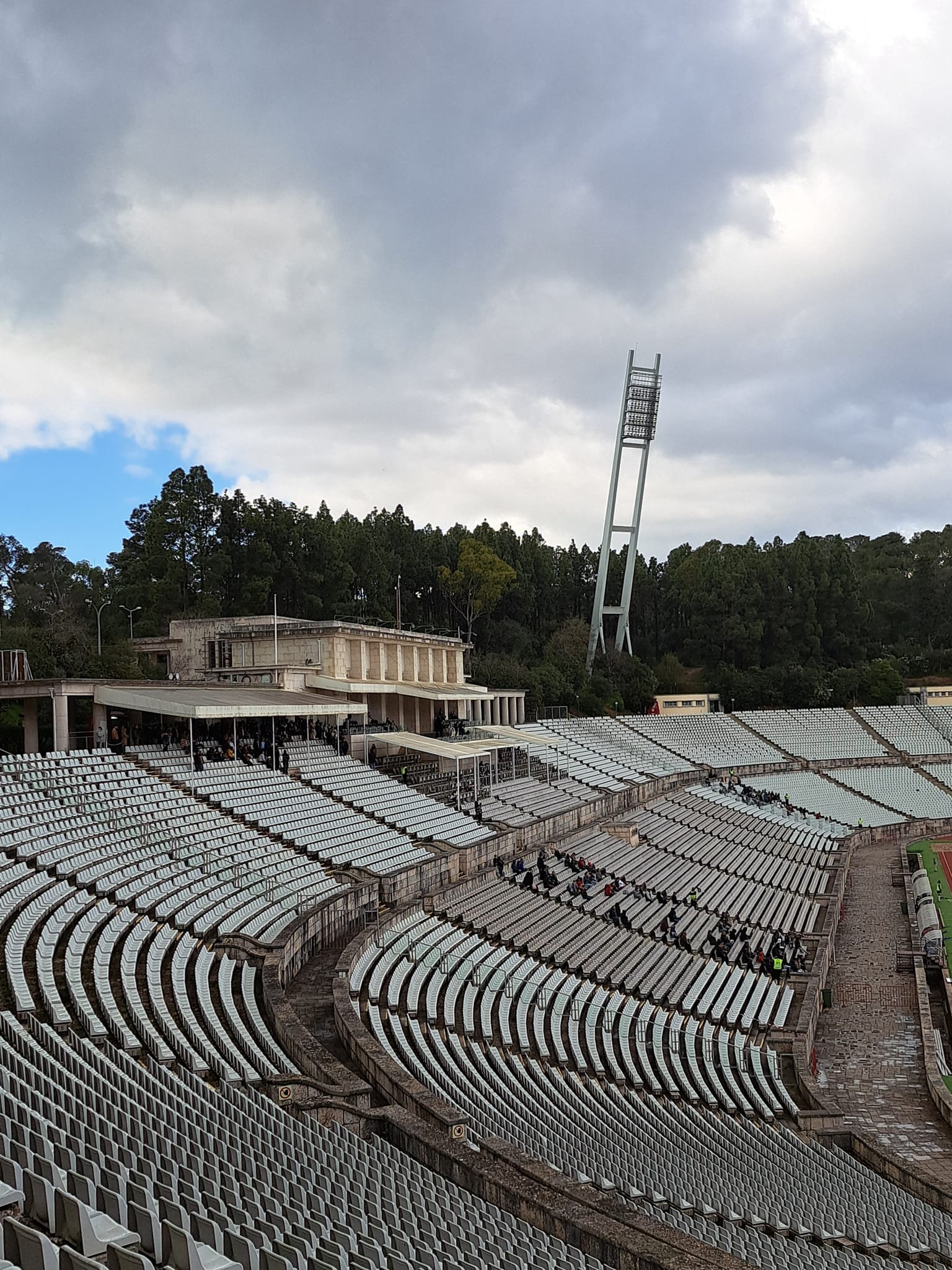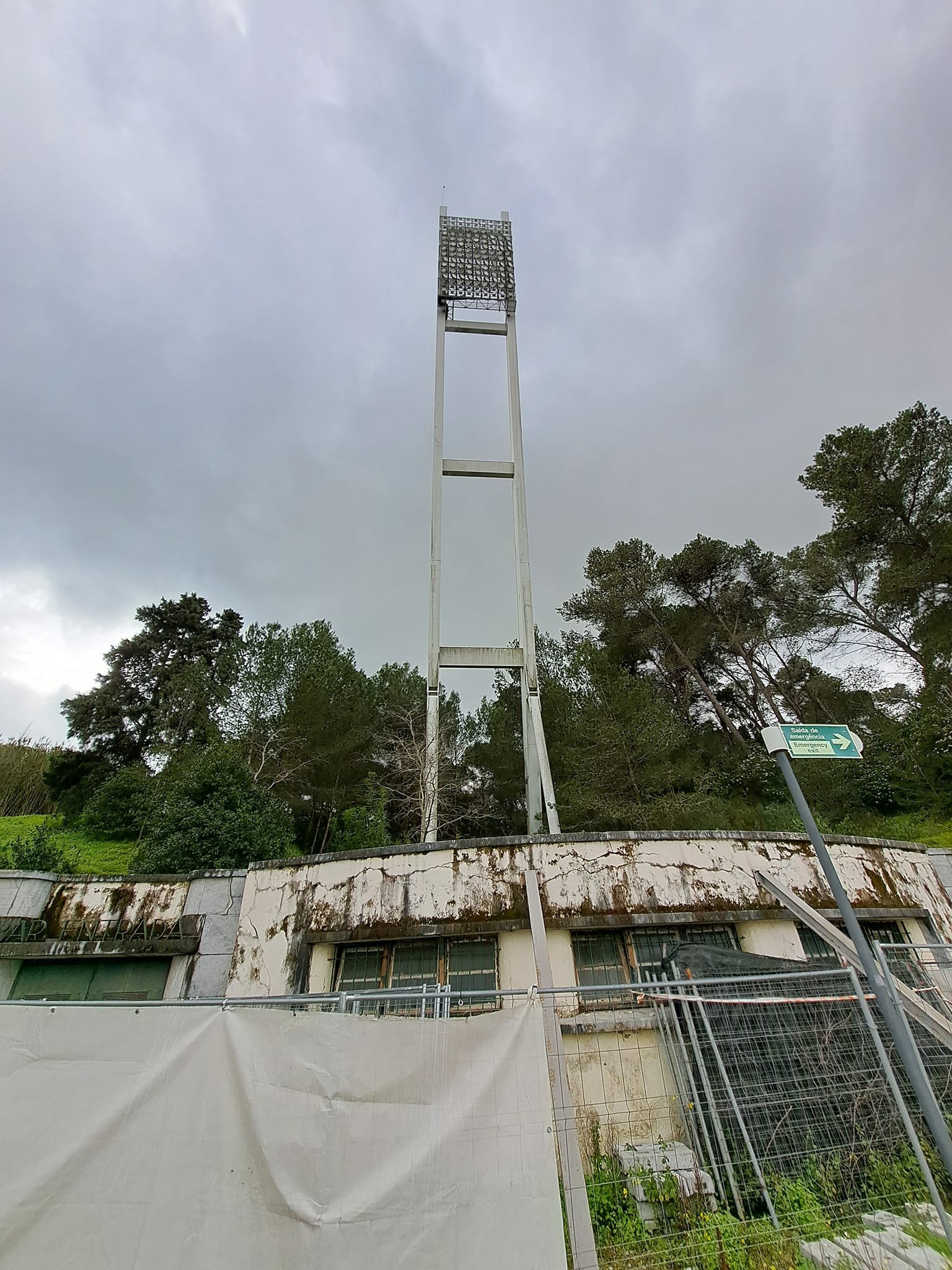Jamor and Amor in Lisbon: A journey to the famed Estádio Nacional de Portugal
Boasting a beautiful setting and a rich history, the Jamor is often an overlooked relic of Portuguese football. But as Matt Harrison reveals, a visit to the Estádio Nacional should feature highly on any trip to Lisbon.
Pop quiz, hotshot: what do Wembley, the Olympiastadion (Berlin), Stade de France and Estádio Nacional de Portugal all share in common? Take your time…
If you said that all these stadiums are the hosts of their respective nation’s domestic football cup competition, then you would be bang on the money. Well done. However, amongst those four stadiums, there is one outlier that stands out like a big concrete sore thumb. The Stade de France has hosted a European Championship Final in 2016; the revamped Olympiastadion has hosted a World Cup Final this century; and Wembley is now the shiniest of shiny stadiums, hosting multiple Champions League finals and the most recent European Championship Final. These three stadiums all glisten and gleam in all their UEFA-ised glossiness.
Then there’s the Estádio Nacional de Portugal in Lisbon, or as it is better known, Jamor.
As Filipe d’Avillez puts it in his book One Thousand Miles from Jamor – a love letter to Jamor and the Portuguese Cup final – “The cup final at the national stadium in Jamor is an anachronism.”
Jamor does not glisten or gleam. But it does still host the Portuguese Cup final every year. Circling the concrete exterior, it was hard to imagine this place functioning in the realms of modern football. A true anachronism of modern football stood before me on an overcast Sunday afternoon in Lisbon. It was glorious.
I’d arrived in Lisbon for a three-dayer of Super Bock, yellow trams and Portuguese football with the headline act of the trip being a long-awaited visit to the wonderfully green Estadio Jose Alvalade to watch Sporting CP in their wonderfully green shirts. However, a perusal of the Portuguese lower leagues presented me with a Sunday afternoon I just could not resist. S-BAD v Nacional gave me the opportunity to visit perhaps the most storied football stadium in Portugal.
Jamor is located in the middle of a large park, about 12 kilometers from Lisbon’s city centre, near the riverside neighbourhood of Alges. A little out of the way, but Jamor seemed easy enough reach by hopping on a train to the nearby Cruz Quebrada train station. But as someone still visiting an unchartered city for myself, I decided to walk some of the way from the city centre – which somehow became walking the entire way. There is enough to keep you entertained on a riverside walk – the famous Lisbon market, the 25 de Abril Bridge, the Belém Tower – before suddenly you find yourself walking alongside a battered looking beach as you enter the suburban area of Alges. Belém Tower is impressive, as is the bridge, but as a lover of football ground aesthetics, these famous sights of Lisbon are dwarfed in significance by the sight of the formidable floodlights of Jamor that tower over the woodland that makes up a lot of Jamor park.
Football was very much the order of the day with groups of kids and coaches scattered along one of the many pitches in the shadows of the woodland, with the green of various Sporting CP replica shirts blending in with the greenery around. In fact, there seemed to be a whole load of sports going on with tennis courts, crazy golf and canoeing all available. Conscious of Jamor’s reputation as a ‘throwback’ and my uncertainty about food/drink facilities, I decided that the small bar behind one of the various pitches was a good place to make my first Super Bock stop of the afternoon.
With 30 minutes until kick-off and now refueled after two pints of Super Bock, I began the ascent up a woodland path towards the upper regions of the park. And then, as I clambered up through the final part of this path, a huge football stadium suddenly stood in front of me. You won’t find many more inviting football stadiums in world football, with the east side being completely open, nakedly brandishing its storied concrete body proudly, with its huge, glorious floodlights stretching to touch the overcast Lisbonian sky above. Jamor opened in 1944 and I can imagine very little has changed at the stadium since then. It was quite a sight and all the stranger for being encircled by woodland from all sides.
Jamor may stand in the woods on the peripheries of Lisbon as a petulant reminder of football’s black and white yonder-years, but just like those aforementioned elite football stadiums, Jamor is steeped in some glorious history too, especially when it comes to teams in green and white.
In 1955, the first ever European Cup tie happened at Jamor. As Sporting’s Estadio Jose Alvalade was being redeveloped, Sporting hosted the first ever European Cup game, playing out an enthralling 3-3 draw with FK Partizan. Sadly, the stadium also has ties to a more tragic events too, as it was here where the great Torino side of the 1940s played their last ever game – a 4-3 friendly loss to Benfica – before the whole team was killed in the Superga Air Disaster the next day on their way back to Turin.
Undoubtedly, the stadium’s most famous moment would come in 1967. Celtic’s 1967 European Cup team was famously forged from players who were brought up within a 30km radius of Celtic Park, but their legend was sealed at Jamor, as they conquered Helenio Herrera’s infamous Internazionale team and thus the Lisbons Lions were born.
Their legend is such that I was not surprised to find a group of Celtic fans at the gates to Jamor asking the security if they could go in for some photos – despite not having tickets for the game – a request they were granted after much confusion. A quick glance at Jamor’s Tripadvisor page will tell you that there are still plenty of Bhoys making the pilgrimage to the edge of Lisbon.
Unlike the small Glaswegian contingent, I was paying to enter the ground (a measly €5) for the afternoon’s second-tier game. Entering at the open east end, the immensity of the stadium really hits home as you take in the slowly sloping concrete stands and the large main stand on the west side that continues to climb the hill of the park. At the bottom of this monumental stand was where you’d find today’s match attendees. And it was indeed a monumental stand as I learned on ascending it to take some photos and to thankfully find a friendly lady selling beer at the top.
The game itself was a little bit of a non-event and I was surprised to read the attendance was as high as 900, as looking down on the spectators enclosed in the lower seats of the stadium, they looked truly miniscule in this huge, expansive stadium.
The story of the 2018 split that led to Belenenses beng divided into two clubs, OS Belenenses and B-SAD, is a convoluted story for another time. The reformed and rejuvenated Belenenses, who retained the majority of fans and the identity of the famous club, are one of only five clubs to ever win the Portuguese top flight. B-SAD kept the players when the split happened in 2018, while Os Belenenses took the badge and the Estádio do Restelo, a great looking ground located a ten minute drive down the road in Belém. And that lack of support for B-SAD could be felt on this afternoon in the vast Jamor with the atmosphere ranging from non-existent to one old Portuguese man shouting (what I assumed were) obscenities at his own players. There was almost a sense of relief when a sudden downpour started, leading many to scarper to the upper heights of the stadium, where they could just mull around with a beer and chat with friends instead.
The only people in the stadium seemingly having a good time were the hearty band of Nacional fans in the corner. It looked like they were making a lot of noise too, although it was hard to actually hear them in the vastness of the stadium. They were the only ones who really had anything to shout about, as Nacional scored the only goal in a frankly dire game of football. Saying that, I did have something to shout about too.
I was loving Jamor.
With three pints flowing through my system, the romance of the setting really heightened as I started serenading the floodlights that seemed to shoot up from the same soils as the trees below them.
As Filipe d’Avillez puts it in his book One Thousand Miles from Jamor – a love letter to Jamor and the Portuguese Cup final – “The cup final at the national stadium in Jamor is an anachronism.”
I really am envious of those folk who have experienced (and those who will experience) Portuguese Cup finals here. It’s an event which encompasses seemingly the biggest tailgate party in Lisbon, as fans mingle and enjoy the woodland surroundings, before a lucky 35,000 or so fans actually go into Jamor for the final itself.
There was some clamour, mainly from those in football’s ivory towers, for the cup final to be moved around the glitzy stadiums of Benfica, Sporting and Porto, but ultimately the fans have spoken and have successfully rallied for the cup final to remain at the much more romantic Jamor. I for one think you would be silly to take it away from this unique and glorious block of concrete enveloped in the woods of Jamor Park.





